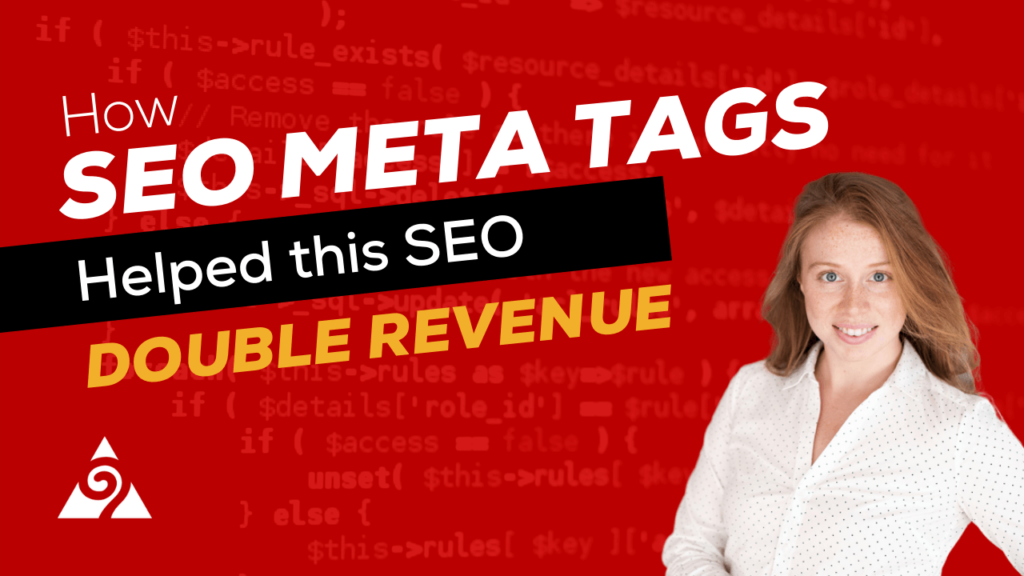Meta Descriptions are often one of the first places that an SEO will look to optimize a website or a listing on the Search Result Page (SERP).
Even though digital marketers have been using meta descriptions to improve their organic performance forever, there are plenty of business owners out there who are wondering things like:
What are Meta Tags?
Which meta tags are important for SEO?
How do I write a meta description for SEO?
Meta descriptions are the text that appears under the title of a search result page (SERP) listing.
By default, search engines will often make the meta description the first text that appears on the page, unless specifically specified. In the photo above, you can see the title tag in the large text, and the meta description in smaller text below it. Meta descriptions should be shorter than 160 characters, and should give the user a good idea of what the content on the page will be. This is also a great opportunity to give search engines context to your page, and to optimize your SERP listing for a keyword that the page should rank well for.
There are several ways to create meta descriptions. Many CMS’s have the ability to add meta descriptions. Web developers can also build custom meta descriptions into a website. It is also possible to add and edit metadata within Google Tag Manager. This option is great for those who wish to run A/b or multivariate testing on their SERP listings, or for those who make changes to their site’s content often.
Metadata is important for all businesses, whether they are in Ecommerce, Lead Generation, B2B, B2C, or Saas industries. Let’s take a look at a few examples of how meta descriptions that are optimized for SEO can improve performance and drive revenue.
Ecommerce and Meta Descriptions Example
Have you ever been tasked with making changes to thousands of web pages? If you have, you know How Overwhelming That feeling is, and if you haven’t, it’s exactly as bad as it sounds. I managed to increase a client’s organic revenue by 95% by using automation to optimize title tags, meta data, and H1 creation.
I have an ecommerce client that has a website of about 20,000 pages, with the majority of them being product pages. This particular website had a tendency to add and take away thousands of products at a time on a rotating basis, with no system to optimize pages for SEO as they were being created. This meant that any title, meta, or header data had to be entered manually. As a result, it rarely got done, their rankings suffered, and their organic traffic and conversions followed suit.
We added the following elements to the page, and saw immediate results:
Meta Title Tags
Meta Description
H1 Headers
After week 1, we saw a 60% increase in traffic, a 30% increase in conversion rate, and improved our average rank by 9 positions. Above you can see a graph that shows the first four months after we implemented these changes. The inflection point choes the immediate improvements, and the continued improvement in traffic and rankings highlight the sustainability of these results.
Since we added the title tag, meta data, and header, we have seen SEO revenue double, traffic increase 150%, and we have maintained our improved ranking and conversion rate. This goes to show how effective and sustainable that data can be in the ecommerce space.
Meta Data Lead Generation Example
We used meta descriptions to improve a client’s ranking with one of our lead generation clients as well. In this case, we used Google Tag Manager to automate the process of A/b testing different meta descriptions. This process proved to be incredibly simple and a matter of just writing a Custom HTML tag to insert the meta description that we wanted to test.
After we found statistically significant results, we applied the winning variation to all of the pages in the test. Like the last meta description example, we saw immediate results once we implemented the new meta data.
Once we optimized our meta tags for SEO, we saw a 77% increase in traffic, a 98% improvement in Click through rate, and we also went from an average ranking of 17.3 to 8.4. Going from a second page ranking to a ranking on the first page after such a small change was massive, and proved just how important meta data is to SEO performance. When seeing such a jump in rankings and traffic, I wanted to dig deeper and see if the changes to the metadata actually impacted revenue for the client. Revenue was, indeed, affected by our optimizations, for this client in particular, organic revenue increased by 30%, which at this rate will bring in an additional $36,000 per month for this business.
Conclusion: So, are Meta Descriptions worth investing in?
Long story short- yes. In our experience, there are several ways to make the process of optimizing meta tags for SEO quick, simple, and effective. The examples that I shared highlight how this can be a low-effort, high-impact way to improve rankings, click through rate, and, subsequently, revenue for a business.
If you optimize any meta descriptions in Google Tag Manager, or if you find another innovative way to do it, share it with us @Augurian on Instagram, Linkedin, or on Facebook, and stay tuned for more SEO Hacks from Augurian.
- Marketing During a Recession: Why it Matters & Strategy Tips - September 13, 2022
- How SEO Meta Tags Helped This SEO Double Revenue - January 26, 2021






